Your Call?
Judy Stepenaskie showed up barely understanding how to operate her Canon gear. After a 90-minute camera body setup session, and a bit of in the field instruction, she began making some excellent images. And she continued to do so for the next five days. When she got back home, she shared some of her images with her partner, Dave, and sent me this e-mail:
Hi Artie: I can’t believe it – Dave was looking at some of my pics and he said: “You never made pictures like this before”!!!
I can believe it. Bird photography is not rocket science. If you cannot join an IPT, be sure too study and bookmark the Improve Your Bird (and Nature) Photography By Leaps and Bounds blog post here.
Which of Judy’s five featured images do you think is the strongest? Be so kind as to leave a comment and let us know why you made your choice.
What’s Up?
I removed my bandages yesterday for the first time. The trigger finger (thumb) incision — six stitches, is looking good, and the carpal tunnel (laparoscopic) incision is barely visible. As expected, I continue to have a bit of numbness in the first four fingers but the debilitating tingling and pain is blessedly gone. I am feeling a bit better each day. As the nerves continue to calm down, I am looking forward to a full and complete recovery.
In the previous blog post here, I was a bit surprised that all but one person picked Image #3 as best. Monte Brown and I liked the first image best. Me because of the blue water and the bit of seaweed. (From the original The Art of Bird Photography, “Add green whenever possible.”)
Today is Monday 26 August. I will be finishing up and submitting my Bird Watcher’s Digest Magazine Fort DeSoto article and get back to work on Murder on the Beach. I hope that you too have a great day.
First Ever Emperor Penguin Chicks Cliff Diving
Check out this amazing video by National Geographic photographer Bertie Gregory:
https://www.facebook.com/reel/25905379979105510
If, like me, you have never heard of Bertie Gregory, click here. I did, and was awestruck. Do not miss his spine-tingling stuff on Antarctic Killer Whales here. His accomplishments at age 30 are mind boggling. If you start surfing his site, be prepared to spend at least a few hours with your jaw hanging down…
|
|
|
This image was created on 5 January 2023 on a San Diego Instructional Photo-Tour at La Jolla, CA. I used the handheld Sony FE 70-200mm f/2.8 GM OSS II lens (at 200mm) and The One, the Sony Alpha 1 Mirrorless Digital Camera.. The exposure was determined via Zebras with ISO on the Thumb Dial. ISO 2000: 1/320 sec. at f/5.6 (a mistake) in Manual mode. AWB at 8:02:16pm on cloudy afternoon. Tracking: Expand Spot AF/C with Bird-Eye/Face Detection performed perfectly. Click on the image to enjoy a high-res version. Image #1:Judy Stepenaskie on the beach with her Canon RF 100-500mm.R6 II rig. |
The First E-mail Exchange
AM: Hi Judy,
Good to hear from you. Thanks for getting in touch. I am just finishing up with the Bald Eagles in Homer, AK.
A few questions if you would: Can you easily handhold the Canon 100-500 or do you use it on a tripod for flight? How much bird photography have you done? Where do you live? What camera and telephoto lenses have you used previously?
JS: I am interested in the July Photo-tour at Nickerson Beach.
AM: Great.
JS: I was wondering how much individual instruction is given.
AM: Lots. Always. Right now, Monte Brown, the only person signed up has been with me many times and has the basics down pat.
JS: I am using a Canon EOS R6m2 with a 100-500 mm zoom lens. I have not been able to capture birds in flight with this camera and need help with the settings to do this.
AM: Though I have never used either the R6 or the R6 II, I am fairly confident that I can help you out with the AF settings.
If you sign up for the IPT I wills send you a free copy of our R5/R6 guide. I used the R5 and a 100-500 for more than a few months when it first came out.
(Learn more about the guide here.)
JS: Would I be getting the help I need, or would a day of individual instruction be better?
AM: In general, beginners and/of folks with new camera bodies would benefit greatly from a day of private instruction the day before an IPT begins. I do that often.
LMK on my questions and any additional thoughts you might have.
With love, artie
|
|
|
This image was created by Judy Stepenaskie on 27 July 2024 at Nickerson Beach Park, Lido Beach, Long Island, NY on the first afternoon of the first Nickerson Beach (Extended) IPT. Seated on dry sand, she used the hand held Canon RF 100-500mm f/4.5-7.1 L IS USM lens (at 400mm) and the impressive Canon EOS R6 Mark II Mirrorless Camera. The exposure was determined using the in viewfinder histogram and confirmed after evaluation of blinks on the JPEG. AWB at 5:51:10pm on a sunny afternoon. ISO 1250: 1/2000 sec. at f/7.1. Be sure to click on the image to enjoy a high-res version. Image #1: Black Skimmer adult calling
|
The First Afternoon
Judy showed up 90 minutes early as planned with her R6 II/RF 100-500 rig. She explained that she had been working in Aperture Priority with AUTO ISO. Her camera set-up was 100% inefficient. I explained to her that working in an automatic exposure mode was a terrible approach as the exposure would change as the tonality of the background changed. As she had no understanding for exposure theory, I frankly explained to her that any good images that she had created previously were due to luck.
She understood, she did not take my comments personally, and quickly agreed to work in Manual mode.
Next was the camera set-up. We reviewed the R5/R6 guide and made lots of menu changes. We set up her R6 so that she could toggle the histogram in the viewfinder On and Off and use it to determine her exposures. I taught her to examine the resulting image for blinkies and thus evaluate her exposures in each new situation. We limited her AF options and made it easy for her to change from one AF pattern to another. As it had been quite a while since I had used the similar R5, we phoned BPN Avian Forum Super-Moderator Dan Cadieux who helped immensely in tying up the loose ends. He saved us a ton of time.
Judy was a quick study, and more importantly, she trusted me. We headed to the beach and in short order, she began creatitng quality images that were sharp and correctly exposed. The skimmer image above was her first keeper. With the southeast wind, she did a great job of waiting for the look-back head turn!
|
|
|
This image was also created by Judy Stepenaskie on 27 July 2024 at Nickerson Beach Park, Lido Beach, Long Island, NY on the first afternoon of the first Nickerson Beach (Extended) IPT. Seated on dry sand, she used the hand held Canon RF 100-500mm f/4.5-7.1 L IS USM lens (at 500mm) and the impressive Canon EOS R6 Mark II Mirrorless Camera. The exposure was determined using the in viewfinder histogram and confirmed after evaluation of blinks on the JPEG. AWB at 5:51:10pm on a sunny afternoon. ISO 2000: 1/1250 sec. at f/7.1. Be sure to click on the image to enjoy a high-res version. Image #2: Common Tern — large chick begging
|
Incredible!
I was amazed that same afternoon when Judy came up with a long series of sharp, perfectly exposed images of a frantically begging Common Tern chick. We had a hard time picking the best of the lot in Photo Mechanic and I was quite impressed with the Animal Eye tracking AF system as it had no problems tracking the eyes of birds.
|
|
|
This image was also created by Judy Stepenaskie. This one on 30 July at Nickerson Beach Park, Lido Beach, Long Island, NY on the third morning of the first Nickerson Beach (Extended) IPT. Seated on dry sand, she used the hand held Canon RF 100-500mm f/4.5-7.1 L IS USM lens (at 500mm) and the impressive Canon EOS R6 Mark II Mirrorless Camera. The exposure was determined using the in viewfinder histogram and confirmed after evaluation of blinks on the JPEG. AWB at 7:13:58pm on a sunny afternoon. ISO 500: 1/1000 sec. at f/7.1. Be sure to click on the image to enjoy a high-res version. Image #3: Adult Common Tern feeding chick
|
Nobody Ever Believes This One
I often state that beginning photographers, with their cameras set up properly and a modicum of instruction, can, on occasion, produce images as good or better than those created by a professional sitting right next to them. That, however, is exactly what happened when Judy created Image #3. As I was to her right when she created Image #3, she had a better angle than I did. She did however, nail the focus and the exposure. QED. (Quod erat demonstrandum: “Which was to be demonstrated.”)
|
|
|
This image was also created by Judy Stepenaskie. This one on 31 July at Nickerson Beach Park, Lido Beach, Long Island, NY on the fourth morning of the first Nickerson Beach (Extended) IPT. Seated on dry sand, she used the hand held Canon RF 100-500mm f/4.5-7.1 L IS USM lens (at 500mm) and the impressive Canon EOS R6 Mark II Mirrorless Camera. The exposure was determined using the in viewfinder histogram and confirmed after evaluation of blinks on the JPEG. AWB at 8:02:02am on a sunny afternoon. ISO 250: 1/1250 sec. at f/7.1. Be sure to click on the image to enjoy a high-res version. Image #4: Adult American Oystercatcher preening (& large chick)
|
The 1.6x (crop)
As Judy’s longest available focal length (500mm) was shorter than everyone else’s (600mm), I recommended that we set her camera to 1.6X crop mode. On the Red Menu, screen 1, the third item down is Cropping/aspect ratio. The default is FULL. We changed that to [1.6x (crop)].That gave her an effective 160 – 800mm lens. Image quality remained quite good.
On the Canon RF100-500mm f/4.5 to f/7.1 L IS USM Super-Telephoto Zoom Lens
At f/7.1 on the long end, this lens is quite slow, faster only than some of the off-brand telephoto zooms. My biggest problem with this lens, however, is the balky, inefficient zoom mechanism. Even with the Tight/Smooth ring set to Smooth, zooming in and out is quit difficult. And the fact that the physical length of the lens changes as you zoom, is a huge negative. The zoom ratio is also poor. I know more than a few very good photographers who use this lens very often. My hat goes off to those who do and produce some very fine work.
Kudos again to Judy for not being afraid of the higher ISOs she needed in various situations to properly expose to the right when using appropriate shutter speeds as needed for a given situation. By correctly choosing a fast enough shutter speed, Judy consistently created sharp images.
|
|
|
This image was also created by Judy Stepenaskie. This one on 31 July at Nickerson Beach Park, Lido Beach, Long Island, NY on the fourth morning of the first Nickerson Beach (Extended) IPT. Seated on dry sand, she used the hand held Canon RF 100-500mm f/4.5-7.1 L IS USM lens (at 300mm) and the impressive Canon EOS R6 Mark II Mirrorless Camera. The exposure was determined using the in viewfinder histogram and confirmed after evaluation of blinks on the JPEG. AWB at 8:02:02am on a sunny afternoon. ISO 2000: 1/4000 sec. at f/6.3 Be sure to click on the image to enjoy a high-res version. Image #5: Common Tern adult in flight above colony
|
Judy’s Biggest Problem with the Canon RF 100-500mm Lens
Judy’s biggest problem was a direct result of the zoom mechanism problems mentioned above; she found it nearly impossible o change the focal length of the lens on the fly.
I cannot help but compare the Canon RF 100-500 (3 lbs.) with the Sony 200-600 (4.65 lbs.). Aside from the significant weight advantage of the RF 100-500, the speed (f/6.3 to f/7.1), the reach (600mm to 500mm), the price ($700 less), and the smooth internal zoom mechanism (the length of the lens does not change as you zoom in and out) and much faster zoom ratio are all clear wins for the Sony super-telephoto zoom.
Typos
With all blog posts, feel free to e-mail or to leave a comment regarding any typos or errors.

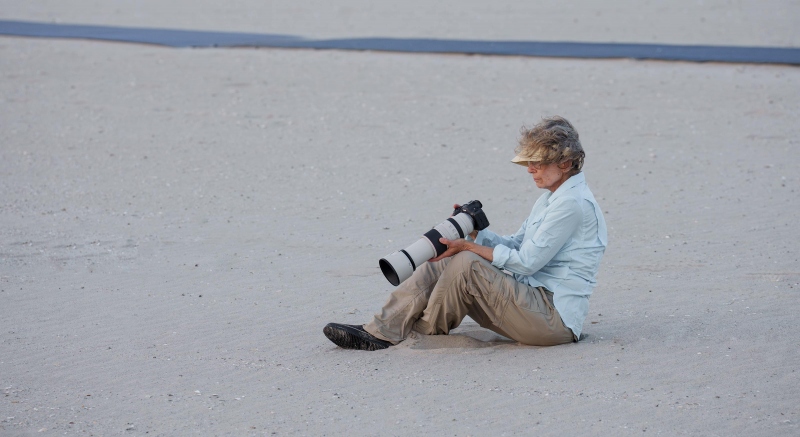
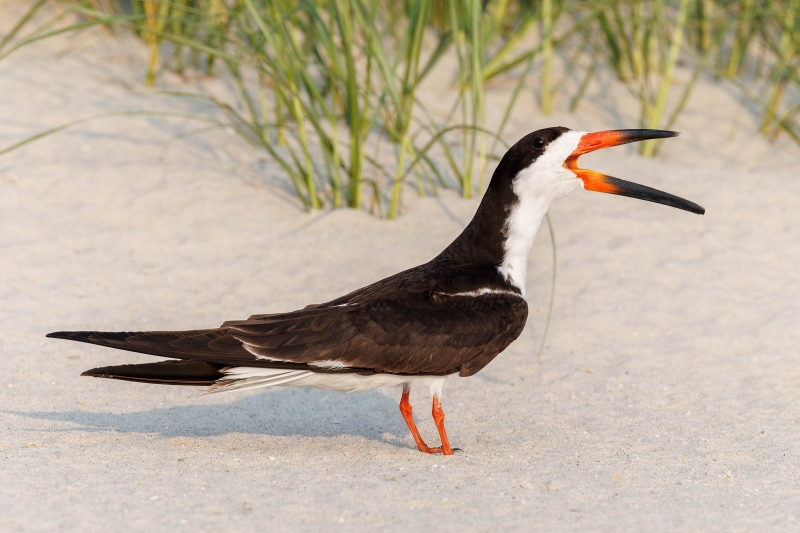
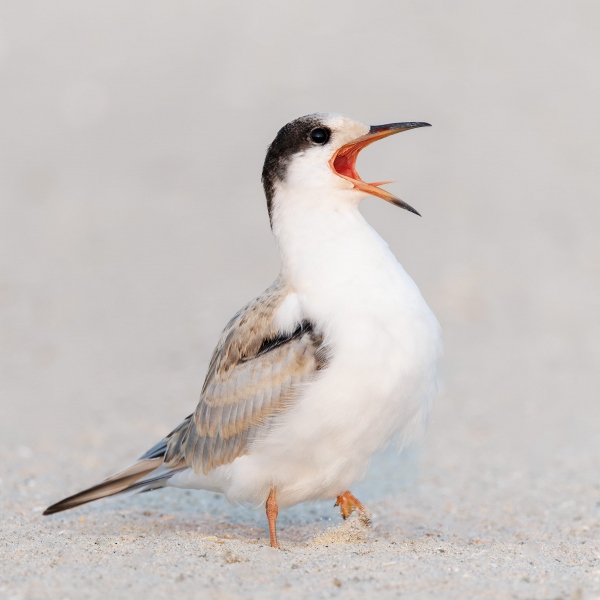
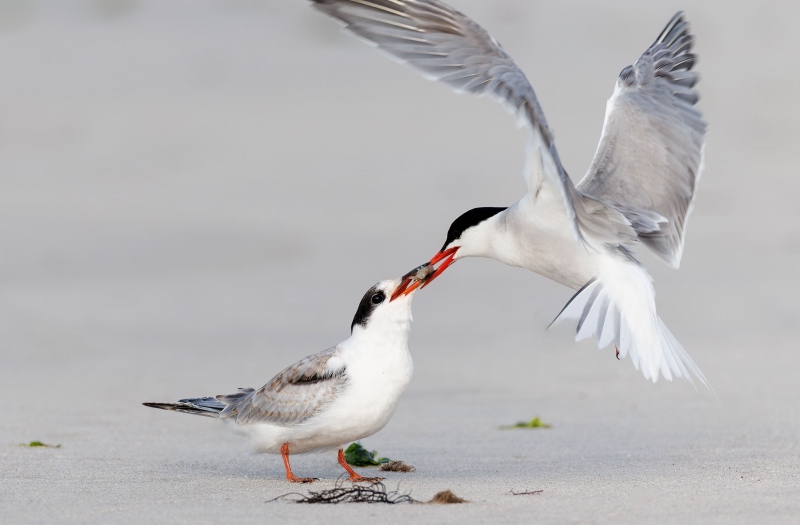
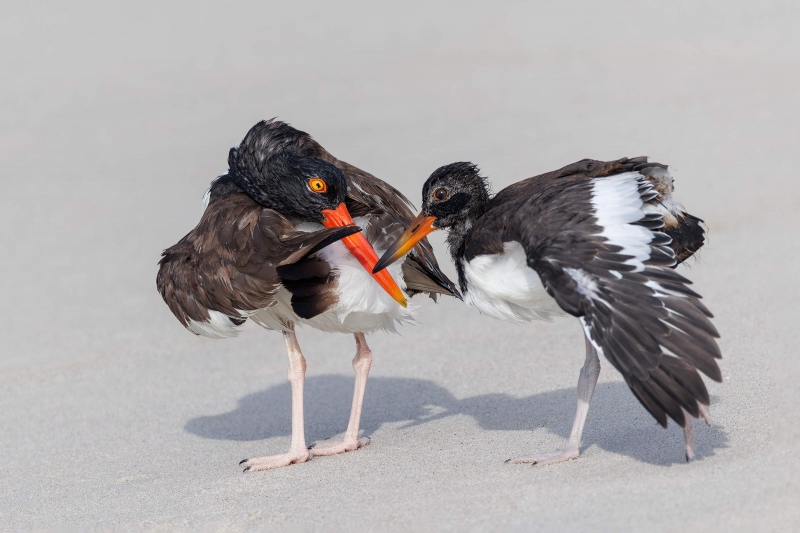
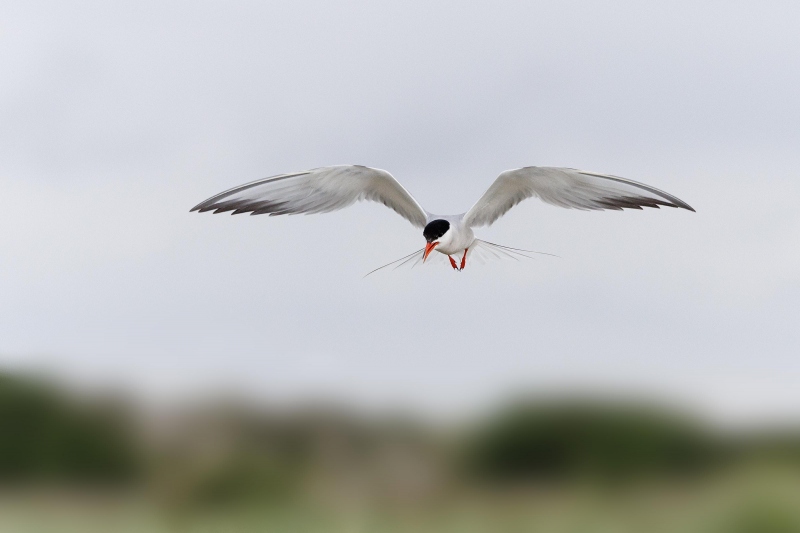













Not usually a fan of tern chicks, but Image 2 is sweet–handsome chick, calling, soft light. Also like Image 4–sun’s relatively high, but the positioning of the birds is great. Agree that the EF 100-400 II is a better choice than the RF 1-5 (though I haven’t tried the latter or any other RF lens); 1-4 works great with a 1.4 teleconverter, and unlike the 1-5, you have full use of the zoom range (140-560). Use a crop-sensor camera like the R7 and you’re up to 224-896 without losing any of your 32.5 MP.
Thanks, Cliff. My best advice to Judy on Images #1 and #4 would be to have gotten a lot lower by using the foot pod technique.
with love, artie
ps: two perfect head angles in #4 was quite a trick.
Judy Judy Judy 🙂
A+ on your photos i love #3-#2-#1 as there framed really sweet and tell a story #4 is just a little busy but i like it with the youngster #5 in flight is interesting and well done so Yes Yes Yes you seemed to have an amazing week. The interesting and well done was for Artie….. Sue…lol
Nice Job and keep it up now that you have a lot of foresight into seeing a photo so press the shutter and enjoy.
Always with love b
#3 is an amazing image and is my favorite. Congratulations to Judy. For those who don’t like the Canon RF 100-500, consider the Canon RF 100-400 f/5.6-8. it is even (slightly) slower than the 1-5 but it’s optically superb, zooms easily, is very light weight, and you can buy three for the price of the 1-5 and have money left.
Thanks, David,
I’d recommend a used EF 100-400 II with an adapter. Faster at f/5.6 and very sharp.
a
The 3rd one capturing the interaction is my favorite. A higher shutter speed freezing the adult might have helped a bit.
I agree with your comments on the 100-500. After hauling the Canon 7d with a 400 DO or Tamron 150-600 on birding tours I’ve been thinking of getting the new R5II and 100-500. However after using the internal zoom of the Sony 200-600m and Oly’s 150-400, it’s hard to go back to a clunky external and also give up the reach and aperture.
Clunky is the word.
a
While I liked all of Judy’s images, the third one was — as you noted– incredible! I’m so glad I joined you at Nickerson and learned to use my new Sony a9iii. Now, if there were only some birds here in Florida to practice on!
Birds are coming soon to Florida!
with love and you are next 🙂
a
Nicely done Judy!